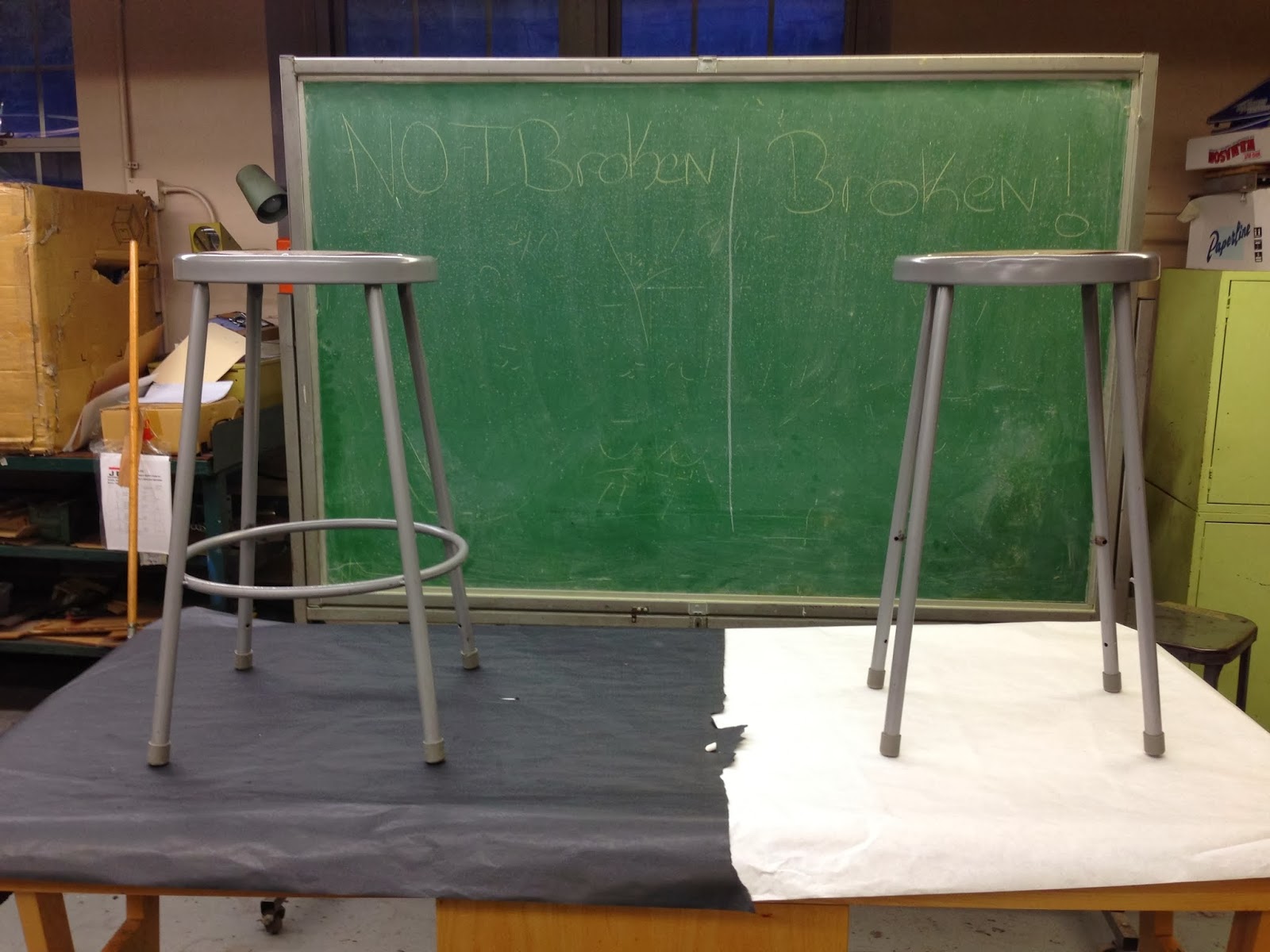 |
| Photo by +Ron Grosinger |

Q:What does fixing a chair have to do with alternative fuels?
We learned to re-design a structure to turn it around and make sustainable a vehicle.
Q:Why do you say “ turn it around”?
Bike frames and chair legs are both made from tubes of steel. You just need to look at it from a different perspective.
Q:What perspective is that?
A creative perspective
Q:What is creative about seeing a chair as a bicycle?
Sometimes you have to realize this is not just two piece of metal tubes welded together, there is so much more that comes from it.
Q: What more comes from it?
There’s welding, angle measurement, making sure it doesn't fail,etc.
Q: Cool tell us more...
Some people may just see a bike and go “Ehh” but people who actually look, see more than just pieces of metal put together. For instance there is a whole show about hand made bicycles called the North American Handmade Bicycle Show. Here is a link: http://2014.handmadebicycleshow.com/
Q:What does this have to do with chairs?
We are using these chairs to gain experience in skills that would later be used to build a bike.
Q:Good , but… What skills would you gain by fixing a chair, that you would need to make a bicycle?
So far we have used welding which is a key element to building a bike. The fundamentals of this design are building, welding, CAD, Etc. When you can combine all of these together, than the possibilities are endless.
Q: but why do you need welding to fix the chair? What part are you welding?)
The chair legs can not support it self. It needs more, so the ring provides the support. the ring would not levitate itself. :) so you need to connect these two together with a strong bond aka a perfect weld.
This is an example a a great weld on a Kent Eriken bike. Mr.Grosinger took the photo at the 2014 NAHBS
So around the end of September, we looked around the classroom and saw that most of the stools in the class were broken.
Q:Why did you look around the room?
We needed place to start. If a chair is broken, most teachers would say "Just grab another chair and I’ll write a form to get new chairs". Instead of throwing these chairs out, we agreed to fix these chairs as a first project. To find out “why” they broke we analyze the problem.
Q:Why did you analyze the problem? vs just fix it?
It could just break again if you don't see what the problem is.
Q:So… what was the problem? and how did you find it?
The weld was too small. We guessed that the production company was making it based on saving money not durability. As we looked, we found that these chairs were designed and made horribly.
Q:What specifically was “horrible” about the chair?
The size of the weld and placement of the ring.
Q:can you show us in a drawing? or photos?
We looked even closer and saw this! Two small welds on either side of the tube.


No comments:
Post a Comment